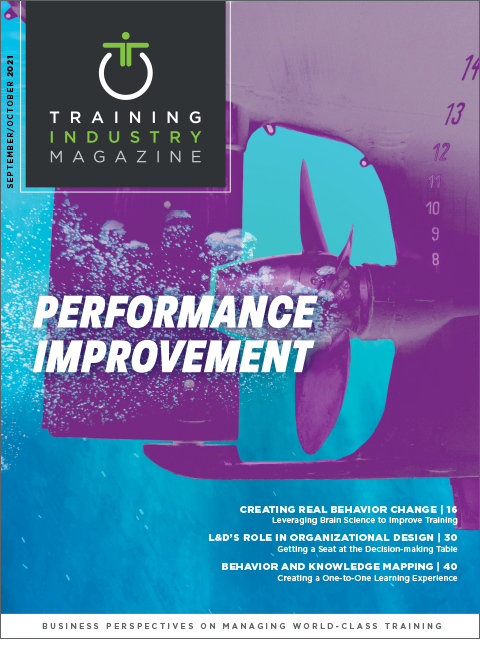
Published in Sept/Oct 2021
When you see the words “performance” and “improvement” sitting next to each other in an article like this, the left side of your brain usually goes on full alert. It does so because traditionally strategic discussions on the topic of improving performance favor facts, data and objectivity.
You know the drill. You are a manager who needs to get increased productivity out of your team. So, first things first. You establish a baseline that accurately reflects where you are. After that, you leverage some form of predictive analysis that identifies where you want to be. And, soon thereafter, you commit to some form of relentless measurement that allows you to incrementally calibrate your progress moving forward.
A few observations on this approach:
- Structurally: Still valid! Actionable performance goals emanate from the gap that exists between the “here and now” as compared to an aspirational “what good could look like.” Hard to imagine that not remaining the case in some form or fashion for the rest of time.
- Functionally: Has been improved in epic proportion by technological evolution. Performance-related feedback and feedforward are informed by real-time metrics that were unimaginable only a short time ago. No reason to think this trend will slow down or lose momentum anytime soon.
- Operationally: Example after example have been documented that suggest performance improvement is increasingly becoming a function of genuine, other-centered, human connection (right-brain stuff). Creative leaders who take risks and thoughtfully approach the dynamic of continuous improvement in a personalized manner are increasingly becoming the norm.
As we are all aware at this point, leaders are primarily judged by their ability to impact three things:
- Productivity: Are identified targets being hit or surpassed?
- Engagement: Are employees anchored to the mission of the company, linked to each other in the pursuit of that mission and cognizant of the role their work plays in helping them fulfill what is personally most important to them in their lives?
- Retention: Is key talent sticking around?
Defined in this manner, which parameter would you say is most important? Of course, they all are! But, if you had to target just one, which one would it be? Legendary leaders like Alan Mulally, Frances Hesselbein, Hubert Joly, Bill George (and no doubt countless others) would answer that question quickly and with conviction: “Engagement!” If the people on your team are “all in,” guess what you don’t have to spend nearly as much time worrying about? Things like productivity, performance improvement and retention. Sounds easy, but it is anything but.
The catch is that leaders who target and prioritize “all-in engagement” have to be “all in” themselves. They need to consistently exhibit and encourage activity like self-reflection, authentic disclosure and collaborative courage. In the process, they find out what truly matters to the people they work with. They find out because they ask them (directly) questions like this, “I’m curious. Why do you work here, and how does that work relate to the things that are most important to you?”
After that, they listen — from the heart — and do everything they can to help those people see, understand and appreciate how their contribution and personal search for excellence at work can contribute to the fulfillment of their most important goals in life.
This leads us to conclude that ongoing, tangible performance improvement will continue to be structured and surrounded by the tools of objective analysis while remaining (at its core) a function of a leader’s ability to establish and sustain an empowering connection fueled by personal investment.
